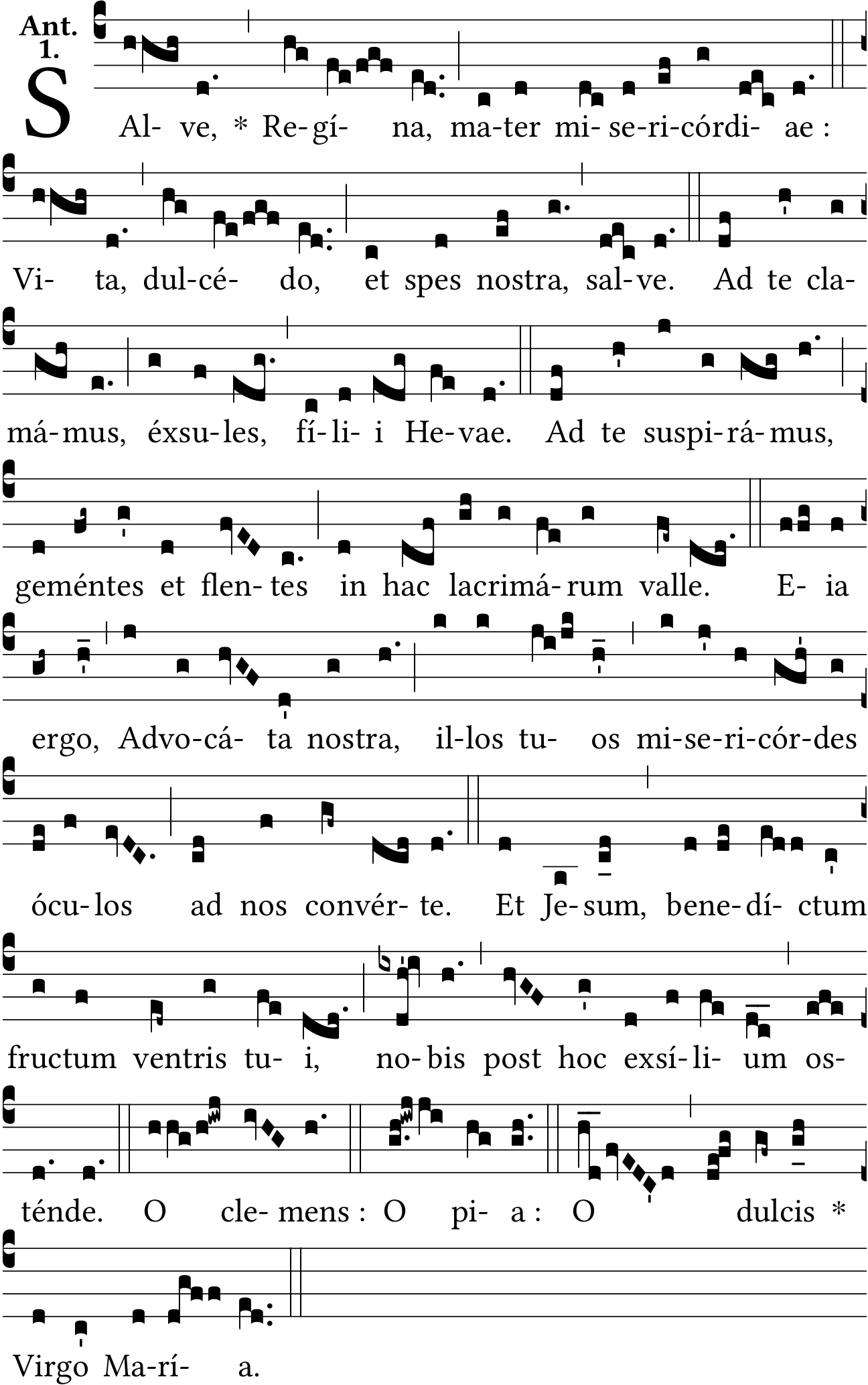Chant Comment

Marian Antiphon: Salve Regina
ORIGIN – This anthem to the Virgin Mary (often referred to as an antiphon because originally used as one) is among the most popular chants sung in her honour in the West. Its origin remains shrouded, but evidence of its existence in the 11th cent. belies the tradition attributing it to St Bernard (who seems however to have played an important part in its wide diffusion). The most favoured name at present is the one of Hermann Contractus (c.1013-1054), a cripple from birth, who was never able to move without assistance. His parents entrusted him to the monastery of Reichenau on Lake Constance at the age of 7, and as a monk he became one of the leading intellects of the day; people flocked to him, attracted as much by his goodness as by his learning and teaching skills in such subjects as maths, astronomy, music, Latin, Greek and Arabic. He was also an astute historian, wrote poetry and composed hymns.
THEME – “And how is it that the Mother of my Lord should come to me?” cried Elizabeth in wonder, when Mary visited her. Since then generations have loved to address her as Queen, in honour of her unique maternal relationship to Jesus, Son of Mary and Son of God. It is as to a queen and mother that they have brought their sorrows and needs, confident that the Mother of Him who is all Mercy can also be addressed as “Mother of Mercy”; confident also that no-one better than she can draw us to Jesus, our true Life and Hope.

MELODY – Very appropriately, the solemn melody ( a simpler, less ancient one also exists) is in the majestic First Mode, perfectly suited to its character. Buttressed by Fa and Soh, its soaring arches connect the tonic Re to its modal counterpart La ( eg “ad te”-to you). Like the arches of a gothic cathedral, each ascending line is balanced by a descending one, by means of which the melody strides forward as though in great waves of prayer. The first two phrases echo each other melodically: notice how the usual order of ascent-descent is inverted. This produces the ringing quality of the initial “Salve”-Hail – but more subtly, through the rippling cascades of notes, creates the immediate impression of outpoured favour from one who is queen but also mother. From this assured favour, we, still earthbound as we are (notice how the melody plunges well below the tonic on “gementes et flentes”- mourning and weeping), find the confidence to send our prayers to heaven. And so begins a steady build up, stretching to top Do and ultimately reaching upper Re as though attempting to touch heaven on “illos…”- those merciful eyes. This is also the starting point of a magnificent descent reaching down to “Et Jesum”…: our Queen graciously responds with her loving gaze and presents to us her child. The melody of “et Jesum” movingly echoes that of the earlier “gementes et flentes”, reminding us that this Jesus, although come from heaven, has descended with us into the valley of tears and is, like his Mother, able to sympathize with our weakness. So with renewed confidence, we can utter the final invocations: once again the insistant trust, expressed in the pleading ascents, is answered by the gently descending ripples, the outpouring of maternal favour and solicitude.



